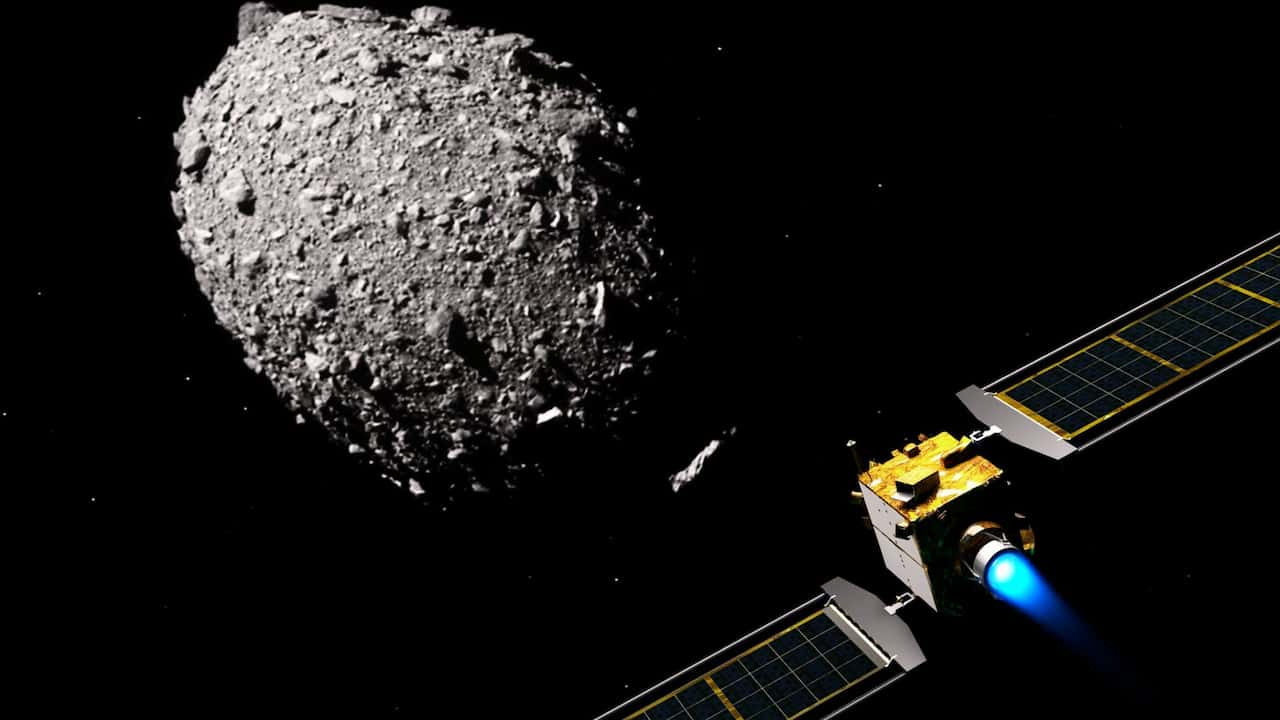Space Agencies Join Forces to Test Earth’s Asteroid Defense
In a groundbreaking mission that reads like science fiction, the European Space Agency (ESA) has launched a spacecraft to investigate an asteroid that NASA intentionally crashed into last year.
This cosmic collaboration marks a crucial step in humanity’s efforts to protect our planet from potential asteroid threats.
On Monday, October 7, 2024, at 10:52 local time (15:52 BST), the Hera spacecraft blasted off from Cape Canaveral, Florida. Its destination? A small asteroid named Dimorphos is located about 7 million miles from Earth.
This mission is part two of an international effort to see if we can deflect dangerous asteroids headed for Earth. The first part, NASA’s Double Asteroid Redirection Test (DART), made headlines in 2022 when it successfully altered Dimorphos’s orbit by crashing into it.
Now, Hera is on its way to examine the aftermath of that collision. The spacecraft will travel for two years before reaching its target in December 2026. Once there, it will study the impact crater left by DART and gather crucial data about the asteroid’s composition and structure.
“We’re going back to the crime scene,” says Ian Carnelli, Hera’s project manager. “We need to understand what happened after DART’s impact and learn as much as possible for future planetary defense missions.”
Hera isn’t traveling alone. Two smaller spacecraft, called CubeSats, will tag along for closer inspections. These shoebox-sized probes will use radar to peek beneath Dimorphos’s rocky surface and may even attempt to land on the asteroid.
But why go to all this trouble for a space rock that’s not even on a collision course with Earth?
“It’s not about avoiding human extinction,” explains Professor Naomi Murdoch, a scientist involved with the ESA mission. “It’s about creating a system to minimize damage as much as possible. The dinosaurs didn’t have a space program, but we do.”
While massive, extinction-level asteroids are easy to spot, smaller ones like Dimorphos (about 160 meters wide) can slip under the radar. In 2013, a house-sized asteroid exploded over Chelyabinsk, Russia, injuring over 1,600 people and damaging buildings across a wide area.
By studying Dimorphos closely, scientists hope to better understand how different types of asteroids might respond to deflection attempts. This knowledge could prove vital if we ever need to knock a real threat off course.
“Every asteroid is unique,” says Derek Richardson, an astronomer from the University of Maryland who worked on the DART mission. “The more we learn about their physical properties, the better prepared we’ll be to deal with potential threats in the future.”
The $400 million Hera mission faces some challenges. Space debris from the DART impact could pose risks to the spacecraft as it approaches Dimorphos. And if the asteroid is tumbling, as some scientists suspect, it could complicate Hera’s observations and the CubeSats’ landing attempts.
Despite these obstacles, the mission represents a significant milestone in planetary defense. It’s the first time humanity has attempted to alter the course of a celestial body and then study the results up close.
As Hera makes its way through space, it carries with it the hopes of scientists and civilians alike. Its findings could shape how we approach asteroid defense in the coming decades, potentially saving lives and protecting our planet from cosmic impacts.
While the chance of a significant asteroid strike in our lifetime is low, the potential consequences are severe enough to warrant this proactive approach. As we venture further into space and expand our understanding of the cosmos, missions like Hera remind us of the importance of working together to face challenges that affect us all.
As we await Hera’s arrival at Dimorphos in 2026, one thing is clear: the era of passive observation is over. Humanity is actively shaping our cosmic neighborhood and protecting our home planet. It’s a small step for a spacecraft but a giant leap for planetary defense.
